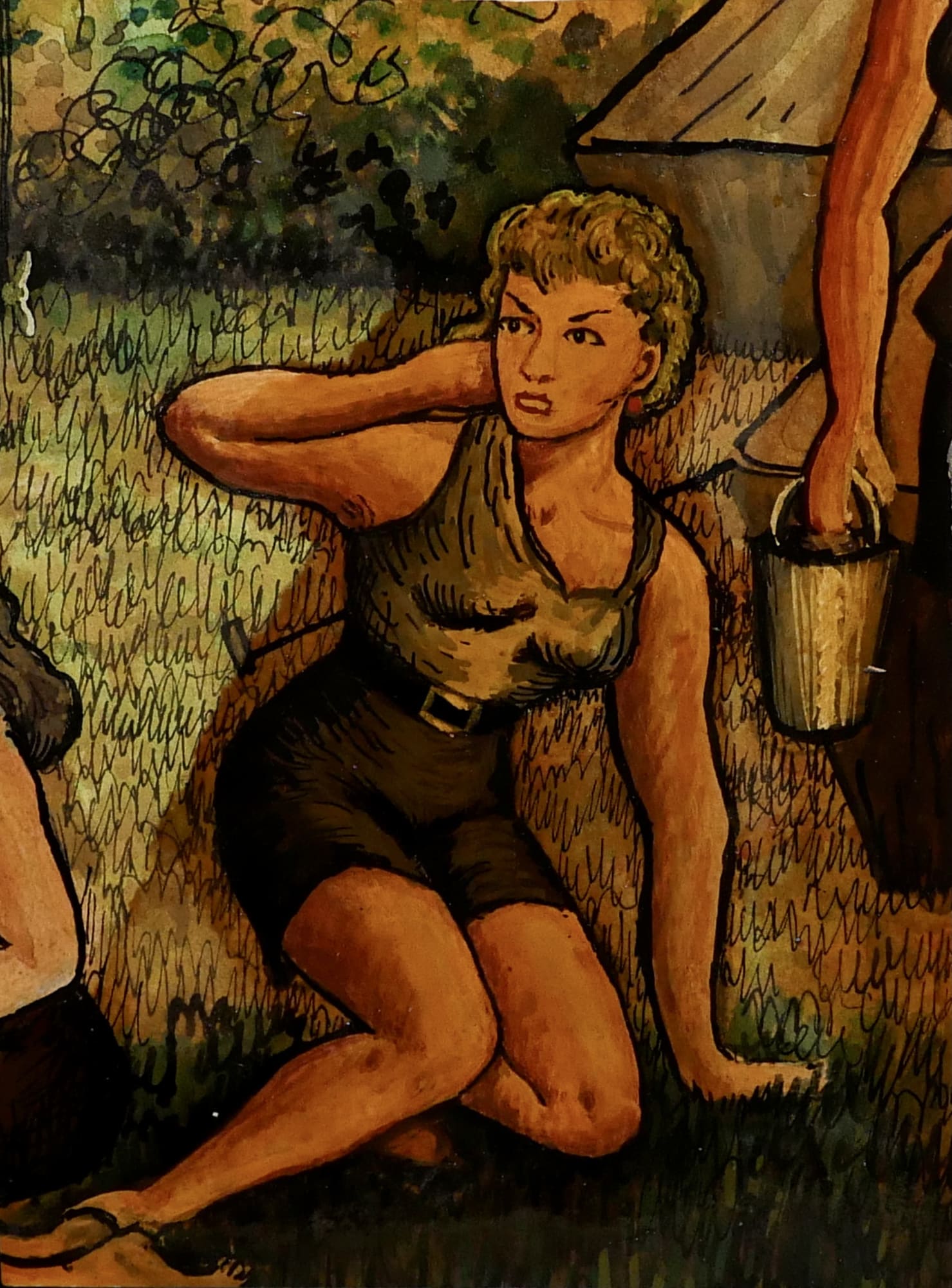-
Artworks
This girl is a prisoner at a National Labor Service camp in eastern Rocaterrania. Following the second revolution, rebuilding the country became the top priority, and “anybody opposing that,” said President Gorghendi Kahn, “will be put into labor camps and made to work.” National Labor Service camps were essentially forced labor camps, but Kahn’s policy was that “if you treat your prisoners well, they’re going to work. You don’t put them in there and starve them to death like the Nazis or Communists did.”
Prisoners were well fed, clothed, and housed, but they worked all day long, and evenings were spent studying and listening to propaganda about Rocaterranians having to be willing to work together if ever the nation was to be free.
Personal Significance:
The beginnings of the National Labor Service, in general, represented Kuhler’s focused efforts as a student at the University of Colorado. It’s presence continued to represent his progression in his career, first as a curator of history at the Eastern Washington State Historical Society in Spokane, and finally, as a scientific illustrator at the North Carolina Museum of Natural Sciences in Raleigh.
The Labor Service camps represented Kuhler’s self-discipline, in general. He knew he would have to force himself to study—even when he didn’t feel like it—in order to graduate from university, the first step towards personal independence and freedom. Later, he knew he would have to teach himself the craft of scientific illustration in order to keep his job at the NC Museum of Natural Sciences. It was a form of self-imposed tough love.
Influences:
America’s Civilian Conservation Corps (CCC), established by President Franklin D. Roosevelt as part of his Great Depression-era New Deal. Soviet gulags and other forced labor camps throughout history.
